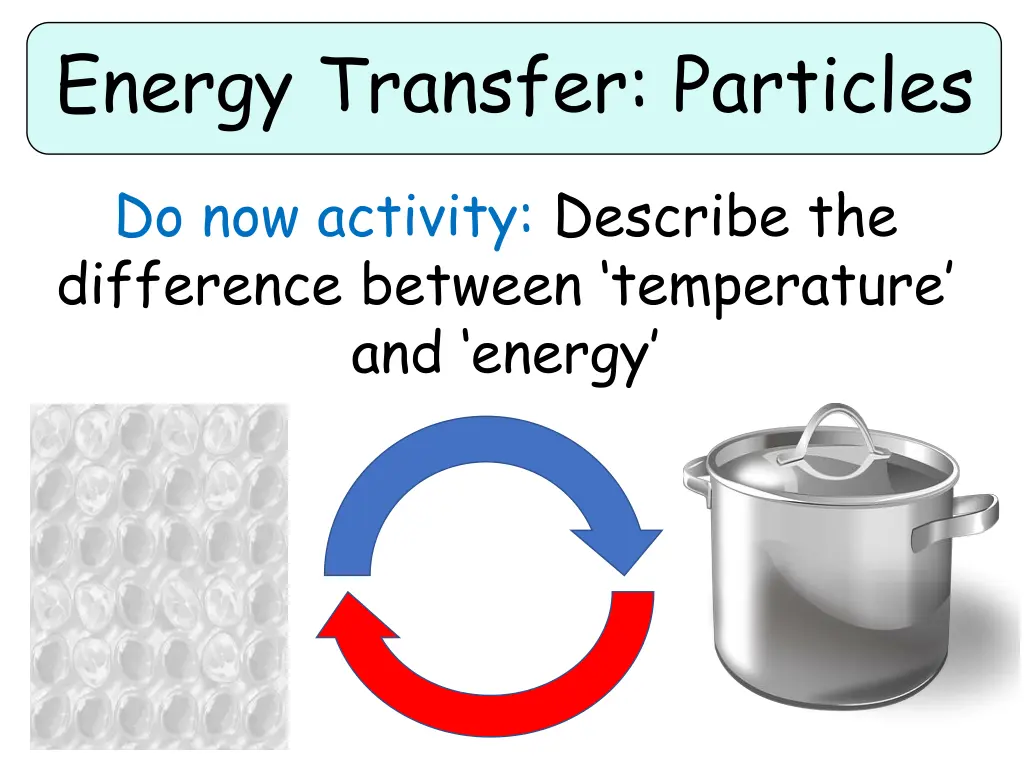
Understanding Heat Conduction and Conductors
Explore the concepts of heat conduction, conductors, and insulators through engaging activities and discussions. Learn about the transfer of energy through particles in different materials and understand why conduction occurs best in solids. Discover examples of good conductors and insulators, and investigate the heat conductivity of various materials.
Download Presentation

Please find below an Image/Link to download the presentation.
The content on the website is provided AS IS for your information and personal use only. It may not be sold, licensed, or shared on other websites without obtaining consent from the author. If you encounter any issues during the download, it is possible that the publisher has removed the file from their server.
You are allowed to download the files provided on this website for personal or commercial use, subject to the condition that they are used lawfully. All files are the property of their respective owners.
The content on the website is provided AS IS for your information and personal use only. It may not be sold, licensed, or shared on other websites without obtaining consent from the author.
E N D
Presentation Transcript
Energy Transfer: Particles Do now activity: Describe the difference between temperature and energy
Progress indicators GOOD PROGRESS: Recall the definition of a conductor Describe how energy is transferred by particles in conduction and convection. OUTSTANDING PROGRESS: Explain how an insulator can reduce energy transfer.
What is a conductor? A conductor is something that lets heat energy flow through it. When heat energy travels through solids. This is called conduction. Some materials are better heat conductors than others, a poor heat conductor is called an insulator. Task: Can you name some examples of materials which make: a) good conductors of heat b) good insulators
Conductors and Insulators An insulator is a material which is a poor conductor, energy is transferred very slowly through an insulator.
Particles & Conduction When a solid is heated the particles gain energy and vibrate more. The particles bump into each other & pass the energy on. Discuss: Conduction occurs best in solids why do you think that is?
Discuss: Conduction occurs best in solids why do you think that is? Conduction occurs best in solids because the particles are very close together. Conduction does not occur very well in liquids and hardly occurs at all in gases because the particles are a long way apart.
Task: Draw a cartoon strip of an object being heated up, include a zoomed in section to show what is happening to the particles in the object as more heat energy is applied.
Investigate: Testing conductors Equipment: Different rods copper, wood, plastic, iron, zinc. Bunsen burner & heatproof mat Tripod Stopwatch Safety clip Petroleum jelly Method: 1. Set up the apparatus up as shown opposite. 2. At the end of one of the rods attach a safety clip using petroleum jelly. 3. Heat the other end of the rod with a Bunsen burner and measure the time taken for the drawing pin to fall off. 4. Repeat with the other types of rod. 5. Which is the best conductor? Which is the worst?
Particles & Convection Task: Watch the video and complete the following questions in your books: 1. Describe the process of convection 2. Where does convection take place? 3. Describe the pathway hot and cold particles take when moving in a convection current. 4. Draw an example of this in your books.
Self-assessment: 1. Convection is how heat energy travels in moving currents. 2.Convection takes place in liquids and in gases. 3.When particles become hot, they gain heat energy and start to vibrate more. This means they spread out and become less densely packed together. The hotter particles rise up through denser and cooler water particles, the cooler water particles then sink to the bottom where they then get heated up. 4.An example:
Task: Draw a cross-section of a room in a house with a radiator on. Show how a convection current might occur with the air particles in this room Include: Arrows to show the direction in which heat energy is being transferred Labels to show cold air & hot air Extra Challenge: Include extra additional labels to explain what is happening at each stage.
Self-assessment: Cold air Hot air
Plenary What did you learn this lesson? 3 facts 3 key words 1 question to test your peers
